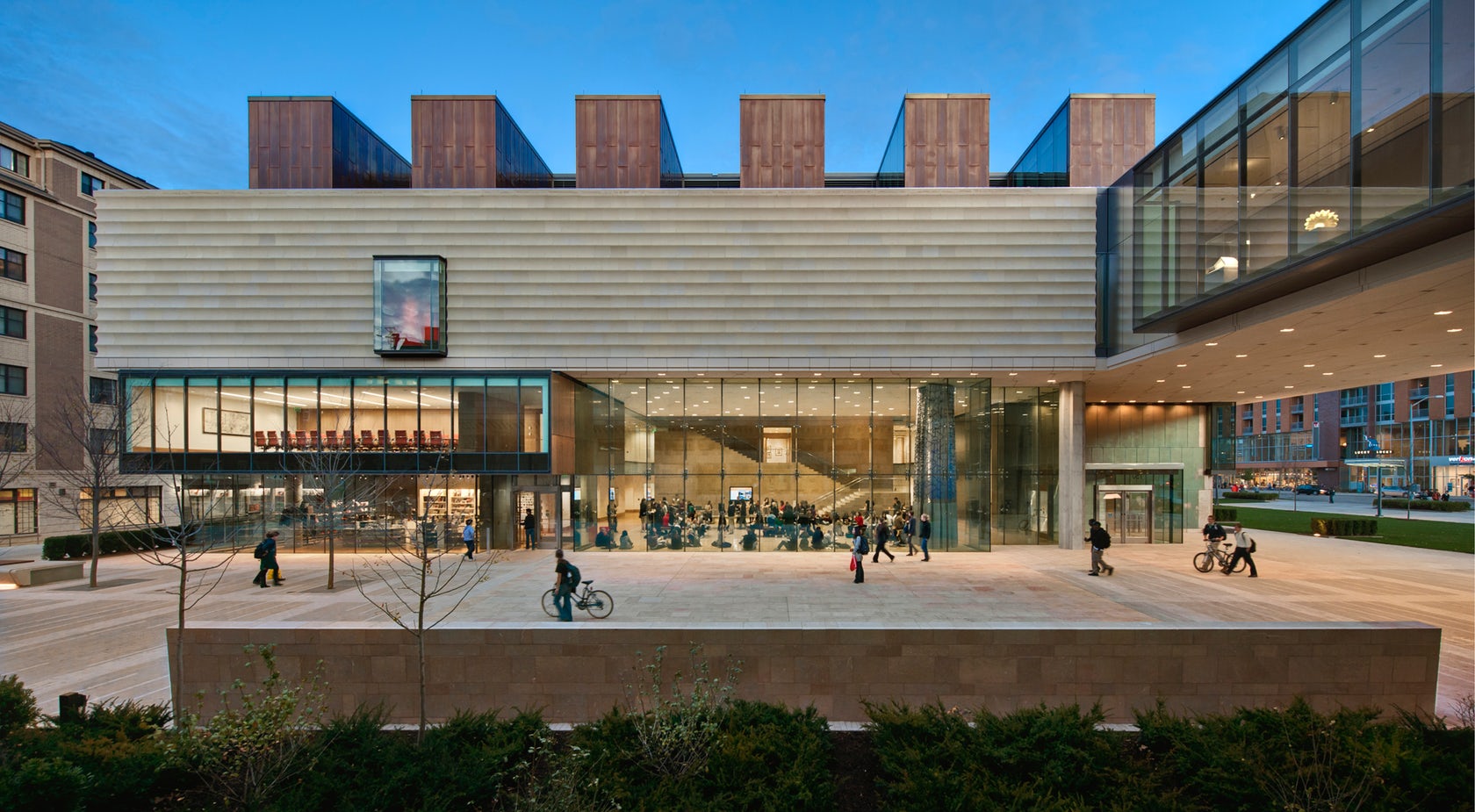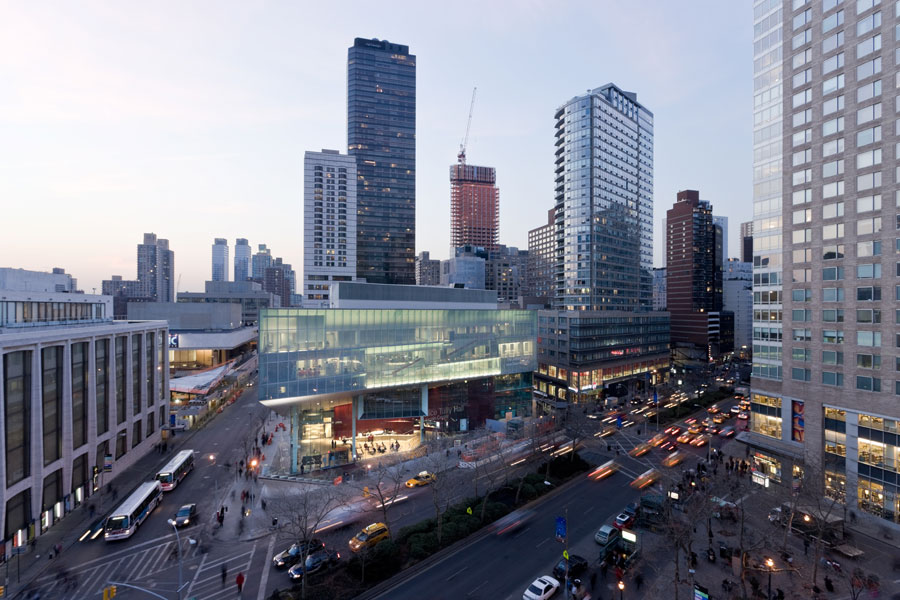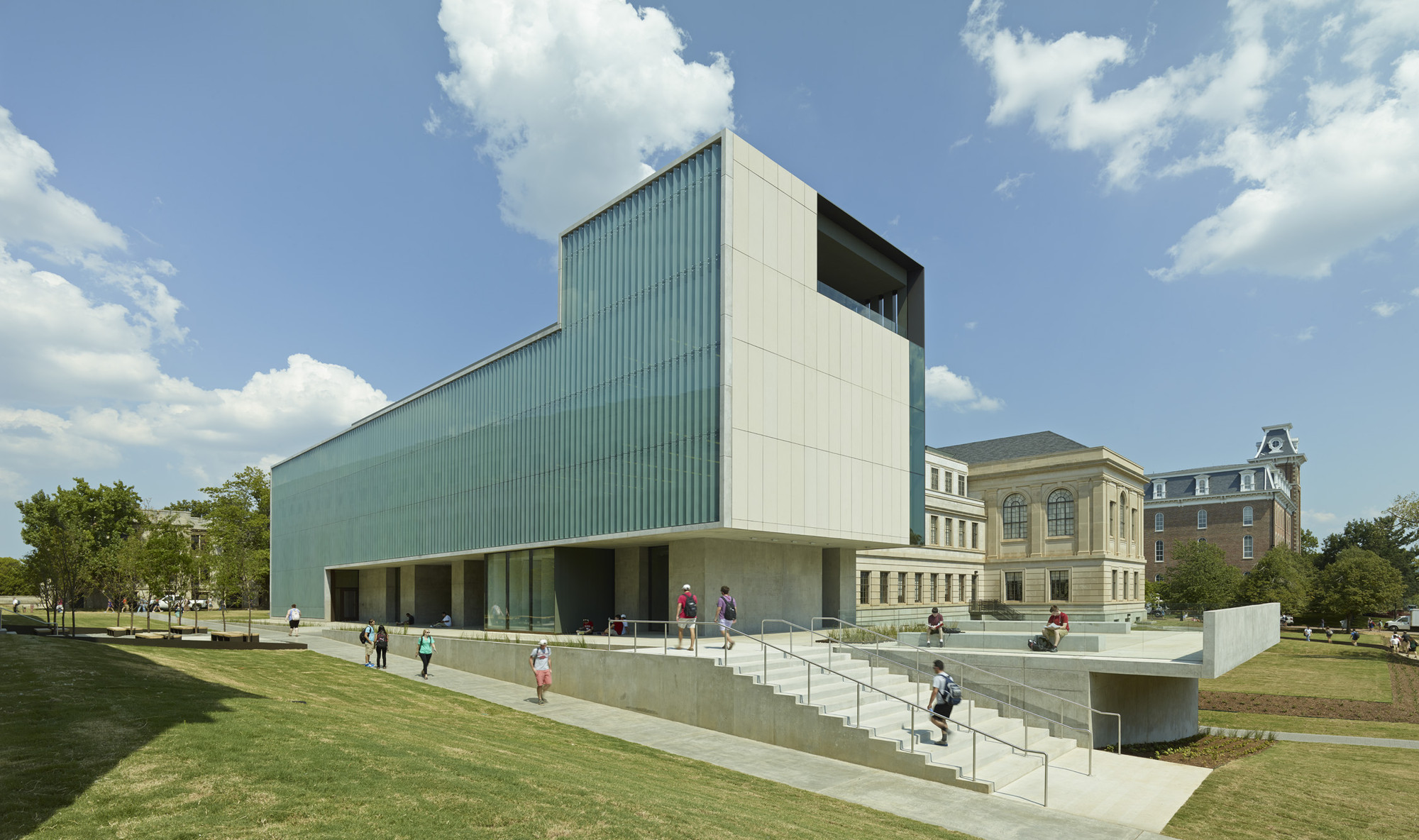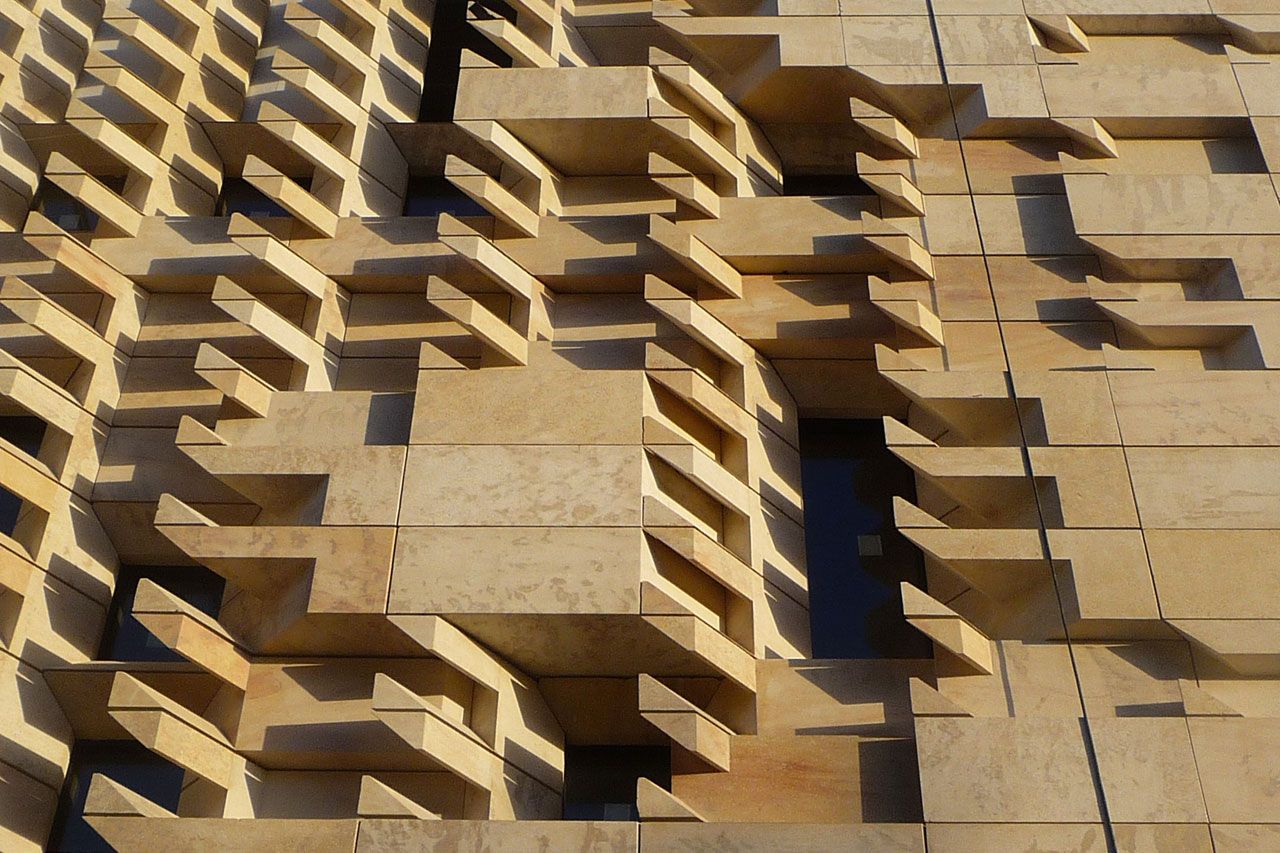Architizer's A+Product Awards is open for submissions, with the Extended Entry Deadline fast approaching on Friday, February 23rd. Get your products in front of the AEC industry’s most renowned designers by submitting today.
Timeless architecture is tricky business. There remains a constant tension, especially within cities, between the desire to create anew and the need to respect or repurpose the historic. Enter materials. The fundamental building blocks of architecture, materials (and their assembly) largely determine the longevity of a given project. A material like stone has been used in construction for millennia, often chosen to establish a sense of stability or timelessness. Today, stone façades are becoming increasingly thin, taking on the form of cladding to be used in conjunction with a larger building envelope system.
Exploring stone cladding in diverse cultural projects, the following designs rethink the material’s traditional construction techniques. As civic and institutional structures, the projects are made with an understanding of larger material contexts. The dynamic cultural centers use stone cladding to control light, view and boundary. Varied in scale and program, the façades dramatically shape experience around contemporary life. Rethinking stone within the building envelope, the designs begin to show how a timeless architecture can be created by reinterpreting a material language.

The Chazen Museum of Art by Machado Silvetti, Madison, Wis., United States
Linear Ceilings & Walls by ACGI – Architectural Components Group, Inc.
Machado and Silvetti’s Chazen Museum was made to create strong connections between inside and outside and from the entrance to the main gallery. Designed with a bridge gallery, the project forms a significant courtyard space along a portion of the East Campus Mall visible from University Avenue. Reinterpreting its context while respecting it, the museum’s exterior cladding and material construction aimed to unify the south façade of the museum and become a gateway to the campus.
Stone cladding was used both inside and out. The linear ceilings and walls were made possible with the help of Architectural Components Group, forming surfaces that climb, fold and define different exterior and interior spaces. Inside, the main public stair is formed by a continuous band of stone veneer, which is conceived of as a stone “carpet” running uninterrupted. Outside, stone cladding, copper and glass combine to realize ideas on aperture, form and light.


United States Courthouse by Mack Scogin Merrill Elam Architects, Austin, Texas, United States. Photos by Timothy Hursley.
Limestone cladding by White Construction
Formed as compact, cubic stone block, MSME’s courthouse was designed around natural light and stability. Clad in local Texas limestone, the project includes rotated and interlocking courtrooms with precisely crafted fenestration and detailing.
The limestone veneer was quarried and cut into 16 different sizes and shape to be laid in multiple configurations around the building’s façade. The tight-woven, ashlar pattern includes both vertical flush and horizontal raked mortar joints. This tooling detail creates undulating patterns across the courthouse’s façade. The intricate limestone combines with a darkly finished stainless steel between floor-to-flooring continuous glazing along the building envelope.


Alice Tully Hall by Diller Scofidio + Renfro, Manhattan, N.Y., United States
Stone Façade by ABC Stone
Alice Tully Hall was created as a renovation and redesign of the existing multi-purpose hall into a dynamic music venue that embraces the streetscape. The former opaque stone building designed by Pietro Belluschi was extended and gracefully opened to the street to provide an intimate lobby and box office. The new building established a high performance inner liner to provide a more balanced acoustic environment throughout the project’s interior.
The hall’s exterior reinterprets the existing stone structure most readily seen through the progressively recessed glazing voids in line with the original building. The stone combines with the fenestration above the tapered one-way cable net glass lobby below. The design was made to address the commonly held opinion about the hall’s lack of intimacy. The project elegantly reinterprets its context to provide a new cultural extension to Juilliard School.


Vol Walker Hall and the Steven L. Anderson Design Center by Marlon Blackwell Architect, Fayetteville, Ark. Photos by Timothy Hursley.
Limestone Rain Screen by Stone Panels
Removing 13,000 square feet of library space in Vol Walker Hall, the new addition of the Steven L. Anderson Design Center features studio and critique spaces as well as an auditorium and roof terrace. Careful material detailing honors the building’s historic counterpart while establishing a powerful language of its own. The project was made as a counterweight to the existing building, formed as a post-tensioned concrete structure instead of a layered steel-frame construction.
Conveying a sense of mass and volume, the architectural concrete and Indiana limestone cladding was chosen to portray substance, weight and stability. The limestone rain screen by Stone Panels was integrated with a fritted glass brise soleil to mitigate solar gain from the west, while simultaneously serving as a way to illustrate construction methods, detailing, and environmental strategies for students of the school.
Architizer's A+Product Awards is open for submissions, with the Extended Entry Deadline fast approaching on Friday, February 23rd. Get your products in front of the AEC industry’s most renowned designers by submitting today.





 Alice Tully Hall
Alice Tully Hall  The Chazen Museum of Art
The Chazen Museum of Art  United States Courthouse
United States Courthouse  Valletta City Gate
Valletta City Gate  Vol Walker Hall and the Steven L. Anderson Design Center
Vol Walker Hall and the Steven L. Anderson Design Center 


